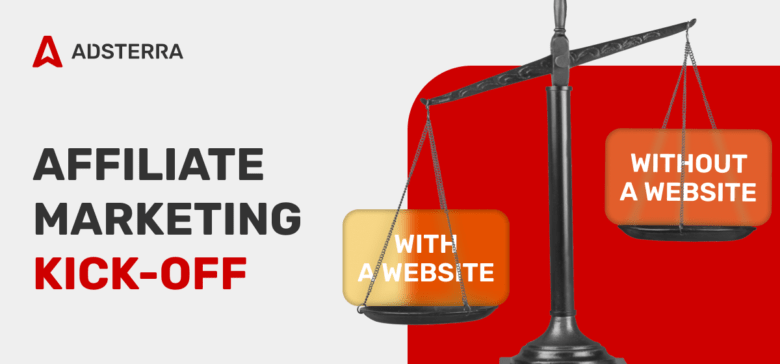The hardest part of starting an affiliate marketing business is making a website that gets a lot of good traffic, that’s why already-established websites sell for up to 40 times its monthly revenue. And that can be too expensive for the average marketer.
That raises the question, “What if you could do affiliate marketing without a website?” You can do it if you know how to get people to click on your links and stream conversions.
What is affiliate marketing?
Affiliate marketing is a performance-focused partnership where businesses pay affiliates a commission for driving sales. Affiliates can promote a link on their own blog, social media, or through other channels, earning a commission for affiliate sales generated from real customers.
It’s not necessary to have a website for affiliate marketing. What matters is the fact of driving referrals to the business. Many companies, including giants like Amazon and eBay, use affiliate programs to expand their reach. Affiliate networks can help connect many affiliate marketers and potential customers.
Is it possible to do affiliate marketing without a website?
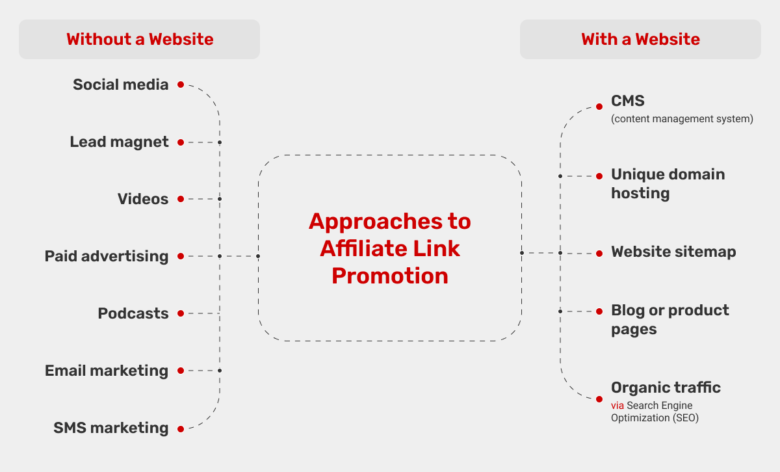
Looking at the basics of affiliate marketing, you’ll realize that none of them require you to have a website for affiliate products. It’s not really costly to start with affiliate marketing with no site. You need three key “ingredients”:
- A target audience: a group of people interested in what you have to offer.
- An affiliate offer: a relevant product or service that solves a problem or helps people reach a goal.
- A traffic source: a way to bring the engaged audience to the offer you’re trying to sell.
Most of the time, affiliate marketing activities revolve around a website. So, do I need a website for affiliate marketing? Well, it’s not a deal breaker as you can cut out the middleman (a site) and promote offers directly from social media sites, email newsletters, and many other places.
3 steps to getting started as an affiliate marketer
To start affiliate marketing without websites and investment:
1. Join a CPA network
Begin with a CPA network where you can promote a variety of offers from advertisers without needing a website. In this collaboration, you get a commission for customer actions, be it filling out a form, leaving an email address, downloading apps, etc.
Look for the best CPA networks with lucrative verticals like: E-commerce, Dating, LeadGen, Pay Per Call, and iGaming in our exhaustive listicle. Also Mobile, Software, Health & Beauty, Downloads, and Financial offers, etc.
2.Pick an offer to promote
If you’re new to affiliate marketing and not a website owner, we recommend promoting Sweepstakes. People love to win free stuff, and if you promote products that people want, like smartphones, laptops, or gaming consoles, you can reach the most people.
If you can’t decide on a vertical or an offer, you can join online communities or groups on different social media sites. Online forums are the best way to get the most up-to-date advice on what to sell and where to find it. You can check out some of the best offers on Adsterra’s website.
3. Use an advertising network
To start earning with an advertising network, say Adsterra, we suggest starting with Popunder and Push advertising. It’s easy to set up and launch campaigns without a technical knowledge or being tech savvy. You can also get genuine traffic with customizable Social Bar for your affiliate links that gets 30Х higher conversion rate.
For that:
- Register easily with Adsterra as an Advertiser.
- Tune your campaign with 20+ settings available and make the tweaks as you move forward.
- Enjoy the Partner Care support team for expert advice.
Start your new promising career with the most caring ad network that delivers targeted traffic and first-class services for pro and new affiliate marketers!
4. Start an affiliate marketing campaign
You won’t be able to make money unless you spend a lot of time setting up, polishing, and optimizing your campaigns. Optimization involves gathering data from your campaigns and picking out the best pieces of traffic.
Your affiliate marketing should also involve testing marketing strategies, offers, online marketing tools, keywords, ad trackers, sources, and other platforms. No matter what your niche is:
- Focus on one vertical, but try out a few similar offers.
- Wait a few days before making changes to the campaign to get more information.
- If the ROI is slightly negative, it means that the campaign still has potential, and you should bid more on profitable sources or targets.
Do affiliate marketing need a landing page instead of a website?
Even if you don’t have a full website, creating a landing page is a way to succeed.
A landing page is a simple one web page built with a content publishing platform (CMS) and designed specifically to sell affiliate products. It serves as a dedicated ad space on the web to where you can forward traffic from social media, email marketing campaigns, etc.
Creating landing pages with valuable content maximizes your conversions. Rather than sharing a direct affiliate link on platforms like Instagram or YouTube, which might come across as too obvious, consider directing your audience to a landing page. This allows you to create compelling copy and catchy visuals for your target audience to interact with the product or service ad.
Even though you don’t need a full site, a well-built landing page can help build trust. People love transparency, making everything clear and transparent for your viewers can enhance the effectiveness of your strategy.
How to make money with affiliate marketing without a website?
Now that we’ve established that you can do affiliate marketing with no website, it’s time to talk about some of other marketing strategies to make money:
1. Use social media platforms
Facebook, Twitter, and Instagram accounts can be a good start to create content, as long as you have a group of people who might be interested in clicking on the post links. The key is to write posts to stimulate audience engagement and grow affiliate relationships.
In order to earn your audience’s trust, your posts must be interesting and useful and fit your niche. You can also buy traffic and attract new viewers from social media with Banner Ads, Facebook ads, Tweets, status updates, and so on.
2. Create an ebook as a lead magnet
An ebook in the form of whitepaper, industry report, newest stats, or any other gated informational content is another good way to get people to click on your offer links and earn money. Even though this option takes more work, it has long-lasting effects if done correctly.
The most important thing when making an in-depth guide is to choose a topic you’ve mastered. You should never write an ebook to put some links in it only for a sales funnel. Your readers will know you’re just hustling. Create content and introduce an ebook that gives your readers information and help them.
3. Promote via online forums or online communities
Most affiliate marketers will use online forums and communities on the internet to promote affiliate links. Once you’ve found a relevant forum related to your topic, you should actively engage. Read the rules of the community or forum to know what kinds of affiliate link posts are allowed.
You can put your links in the forum conversations. Over time, people in the community learn to trust you and be more likely to click on the links you post.
4. Use videos on TikTok or YouTube channel
These social media platforms are the best places to advertise offers plus they act as a social proof. And all you need is to set an account and launch, say, YouTube videos. The outcome will vary depending upon the efficacy of the plan you generate and how you put it to life.
In the same way, TikTok will require your full attention of something to say to the potential customers and following the visual aspects for media posts. As long as the videos you post are attractive and have an affiliate link in video description, you should have no trouble to succeed. Don’t forget that platforms may require you to tell viewers that you’re promoting affiliate links.
5. Use paid advertising on search engines
If you do affiliate marketing but don’t have a separate website or social account, it’s challenging to get free traffic from search engines. As a result, many marketers without sites rely on search ads to bring in customers.
Pay-per-click (PPC marketing) relies on paid ads because you bid on keywords related to the promoted products. Google Adwords (Google Ads) puts ads at the top and bottom of the page in search engine results, and the word “Ad”, so searchers know it’s advertisements when clicking on a paid link instead of free traffic. PPC ads are easy to set up. That said, in many niches of affiliate marketing, the margins aren’t very big.
So, you can’t pay a lot of money for every click. Wordstream’s benchmarking data shows that the average cost per click in some niches is $8 and more and the overall average cost per lead is $66.59. You can’t keep doing that unless you get huge commissions and a high conversion rate.
6. Go on podcasts
Podcasts are not the most obvious way to do affiliate marketing with no website. And since they’re audio based, they are not the best way to promote offers to customers. However, podcasts have too many fans to be ignored.
According to Statista, in 2025, 73 percent of US consumers like podcasts. So what can you do to join in? The easiest way to do this is to talk about affiliate products on a podcast and put links to promote affiliate products in the show notes.
7. Email marketing platforms & SMS marketing
Here, you need to acquire a list of email addresses or phone numbers. Then, you can present your offer effectively without a landing page. Conveniently, SMS messages or email marketing includes some text and they lead to the offer.
8. Use existing traffic
The internet is abundant in traffic, whether it’s on Medium, Udemy, Reddit, or any other major platform you can think of. You can promote your affiliate links on these sites. Your to-be-built website is still to be filled with traffic, and the quality truly matters.
This is a guide about making money via affiliate marketing with no website. At the same time, reading guides and articles alone have never led anyone to large earnings. So, you can start practicing while learning more tricks of the trade: earn as you learn, isn’t it great?
Best affiliate programs for beginners without a website
Now, it’s time to focus on some of the best tools. Successful affiliate marketers as well as complete beginners can start affiliate marketing without a website. The outcome will reflect the efficiency of your plan and how you put it to life.
In digital marketing, if an affiliate program requires you to have your own website, you have no choice but to look for a different one. Here are networks and programs that work with many affiliate marketers without a website, so you don’t waste time.
There is another option to earn money with no website, which is a Smartlink with different offers being shown to your audience. You can put Smartlink anywhere at all. You find the full road map in our guide for working with Smartlink.
ClickBank
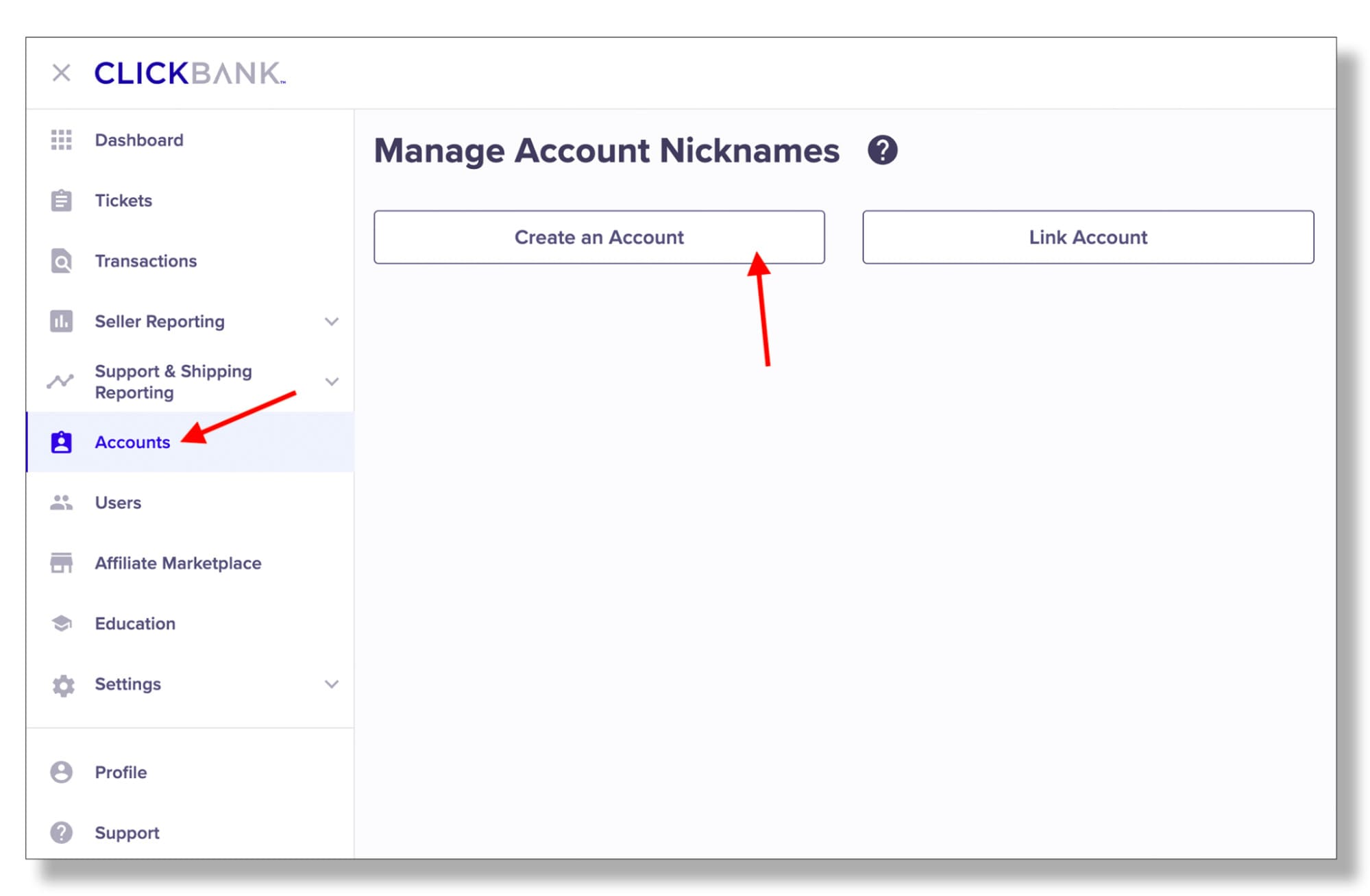
ClickBank focuses on revenue share and CPA affiliate programs in the E-commerce space. It has more than 100,000 sellers and pays a commission of up to $150 per sale.
Amazon Associates
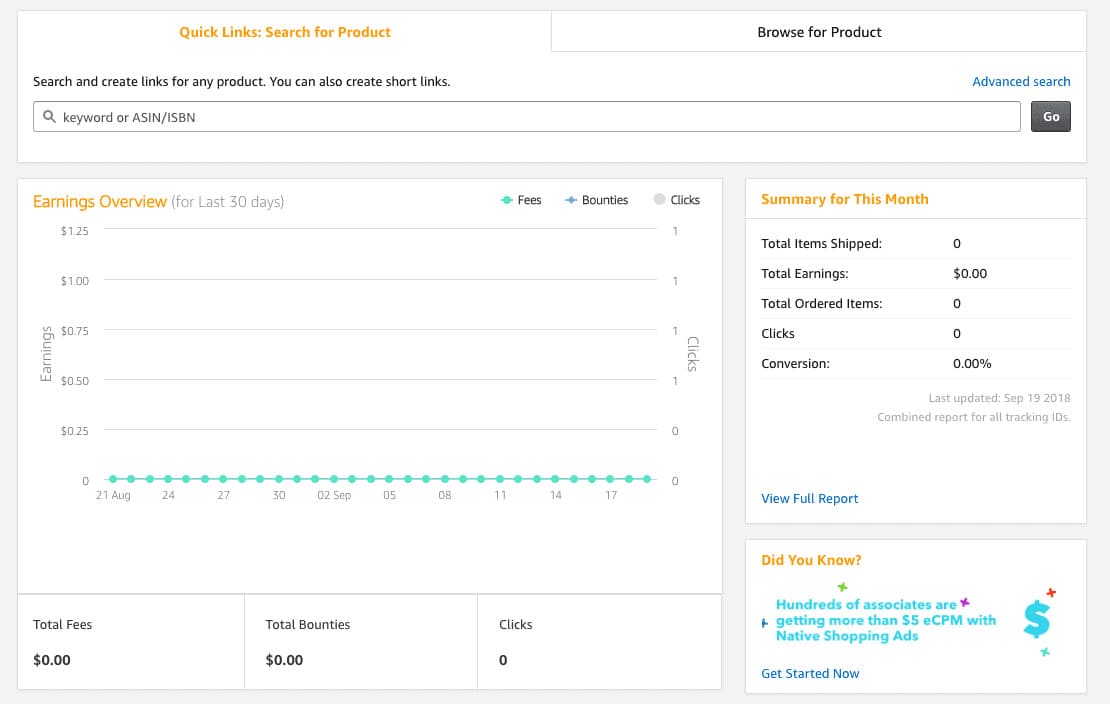
Amazon Associates is likely the biggest affiliate program in the world. The eCommerce marketplace sells just about everything under the sun, consumers trust it a lot, and it has high conversion rates. However, Amazon’s commissions aren’t the highest.
ShareASale
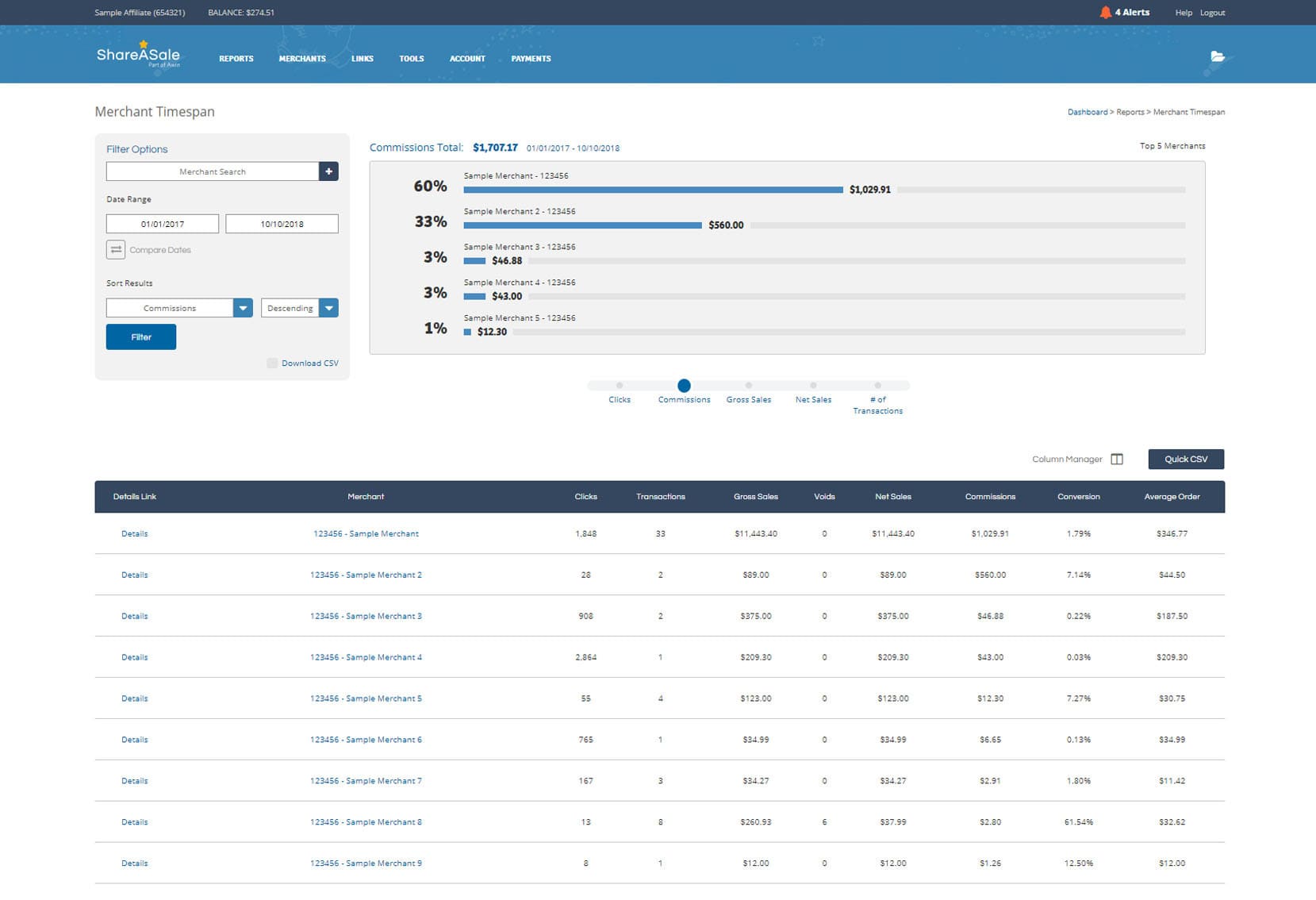
Awin works with over 30,000 customers that grow their business every day with Awin’s affiliate marketing platform. It has 39 consumer categories, such as Allbirds, Etsy, and Reebok. Last year, the network paid out $1.3 billion in commissions, so it’s a good way to make money.
CJ Affiliate (formerly Commission Junction)
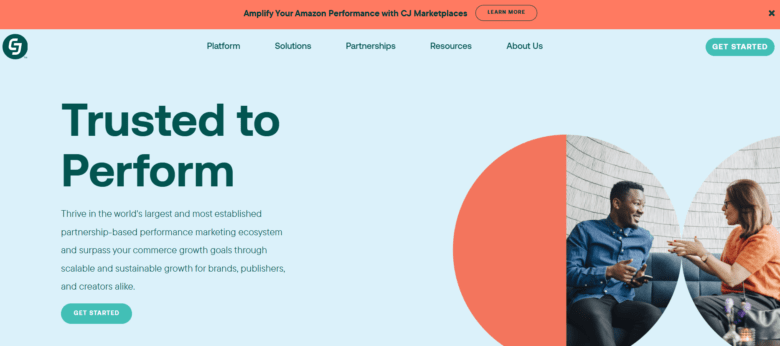
CJ Affiliate is a leading affiliate network focusing on multiple niches. With a website, you can start off with more options, however, it is not a condition for collaboration.
You can place your affiliate links to social media posts, forums, or newsletters, earning commissions from familiar brands.
Tips for affiliate marketing with no website
This article gives you enough ideas to start affiliate marketing for lead generation immediately, even if you don’t have a site. But before you jump in, you should read these top tips:
1. Diversify your efforts
If you don’t have a site, try as many different things as possible. For example, you should use at least 2 of the ideas below to make a sale. If you only focus on one method, you will not get enough or good traffic to earn a good commission.
2. Narrow your niche
If your niche is too broad, you’ll be directly competing with bigger publishers, making it much harder to get good traffic. But narrowing your niche too much will make it harder for people to find you.
Try to form a smaller market within a larger market. For example, you could focus on Lenovo laptops or accessories instead of becoming a computer hardware affiliate.
Check out our list of the best niches for affiliate marketing if you need some ideas.
3. Do keyword research
Spend some time on relevant keyword research before launching search ads. Once you’ve chosen a good niche and joined an affiliate marketing program, the next step is to find the right keywords.
Focus on long-tail keywords to get the most out of SERP. The competition is a little less intense, and if you target the right set of keywords on your website, you can get some good leads.
4. Write your own content
You can always hire someone else to write your high-quality content, but that’s not a good idea. Instead, we recommend being a content creator yourself because no one else can understand what exactly you want to say.
It’s best to make a custom plan corresponding to the affiliate niche you’re going after and then go through with that plan. As long as you work hard and stay focused on your goals, you won’t have to wait long to start making sales!
- Launch a promo campaign
- Choose your particular niche
- Follow SEO best practices, generating organic traffic
Conclusion
Affiliate marketing business is straightforward and available for most. We’ve highlighted the best common practices and valuable insights for passive income in digital marketing. To become an affiliate marketer without your own website:
- Learn to buy search traffic.
- Use paid social traffic.
- Partner with credible CPA networks to get affiliate link offers.
- Pump up your skills in promoting various verticals.
- Track your conversions with reliable trackers.
Regardless of your direction, be consistent with your posts and give your readers, viewers, or followers new useful information. Also, keep track of your progress, be patient, and work toward running a website and blog one day. Affiliate marketing takes time and hard work, but it’s worth it in the end!
Affiliate marketing without a website? FAQ
Can I be an affiliate without a website?
Yes, absolutely. To begin as an affiliate does not necessitate a site. Instead, you can reach your target audience through email marketing, podcasts, paid advertising, etc., or create sponsored content that’s both engaging and high quality.
Another great strategy is to use ad network as a traffic source. For example, with Adsterra, you can direct paid traffic straight to your offer easily.
Do you need a website to make money with affiliate marketing?
You need no site to make money online as main or passive income, and it can certainly be affiliate marketing without a site or blog. You can take advantage of affiliate networks to get your affiliate links with offers for your landing page and drive traffic from a reliable source.
Can you make $100 a day with affiliate marketing?
Many successful affiliate marketers start small and grow over time by experimenting with different approaches, tracking performance, and scaling up what works.
So, making $100 a day is achievable once you’ve built a solid foundation. According to Glassdoor, the annual average base salary for an Affiliate Marketer is $70K, as of Jun 6, 2024.
Here is a great example from Adsterra’s Advertisers: Sweepstakes case study core data on how to choose an offer, geo, strategy, creatives, and to optimize and post-optimize.
What is the 80/20 rule in affiliate marketing?
The 80/20 idea implies that 80% of your business’s revenue comes from just 20% of your efforts in affiliate business.
This means that 80% of your income often comes from just 20% of the affiliate partnerships, while the remaining 20% comes from other sources.
For your affiliate marketing journey, it means that a small portion of your affiliate offers will likely generate the majority of your sales, allowing you to earn passive income through strategically promoting affiliate products. This can also be affiliate marketing without a website or blog.
